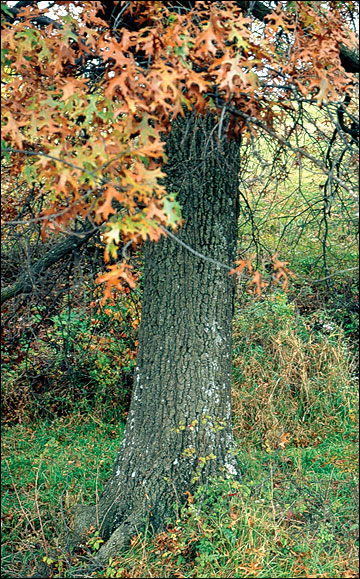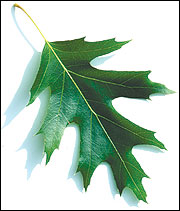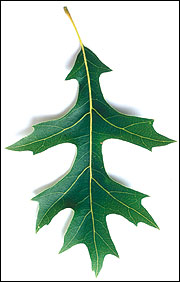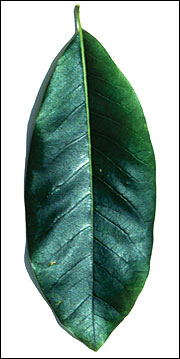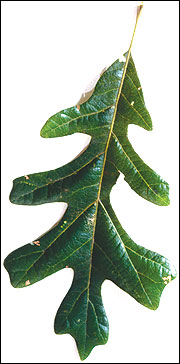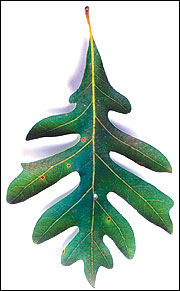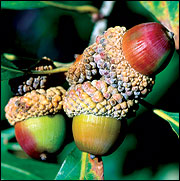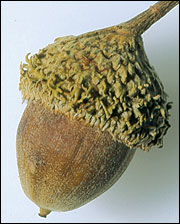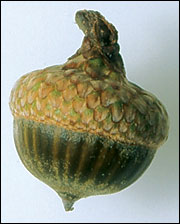Oaks
- Quercus spp.
Woody
Oaks are long-lived trees that produce a seasonally important food for dozens of wildlife species. Their distinctive leaves and bark are identifying features.
Jim Rathert, Missouri Department of Conservation
Description
With more than 30 different species, oaks are arguably the most diverse group of trees in the Midwest. Oaks can be divided into two groups: red oaks and white oaks. Red oak leaves are bristle-tipped on each lobe, and the bark is typically dark-colored and furrowed. Red oak acorns take two years to mature and are bitter tasting. The inner surface of the acorn shell is coated with hairs and the acorn cap scales are usually thin. White oak leaves have rounded lobes and the bark is grayish and usually scaly. The acorns of white oaks mature at the end of their first growing season and are somewhat sweeter than red oak acorns. The acorn caps of white oaks are knobby outside and smooth underneath.
Use by bobwhites
Acorns are prized by bobwhites in the fall. They are a valuable source of carbohydrates that bobwhites convert to fat to meet the energy demands of winter. Of particular importance to bobwhites are oak species that dependably produce many small acorns, like chinkapin, post, pin, shingle and black jack oak. Bobwhites also readily consume pieces of larger acorns dropped by squirrels or deer. Oak sprouts that are kept short by mowing can provide adequate thermal cover in summer and brood habitat if not allowed to dominate an area. Dense stands of young oaks less than 10 feet tall can provide escape cover.




